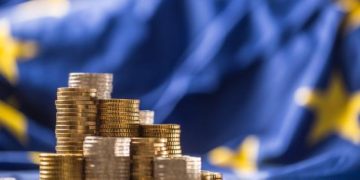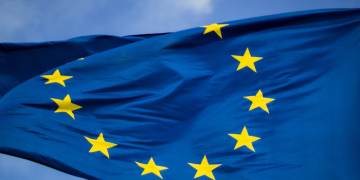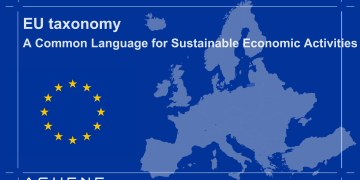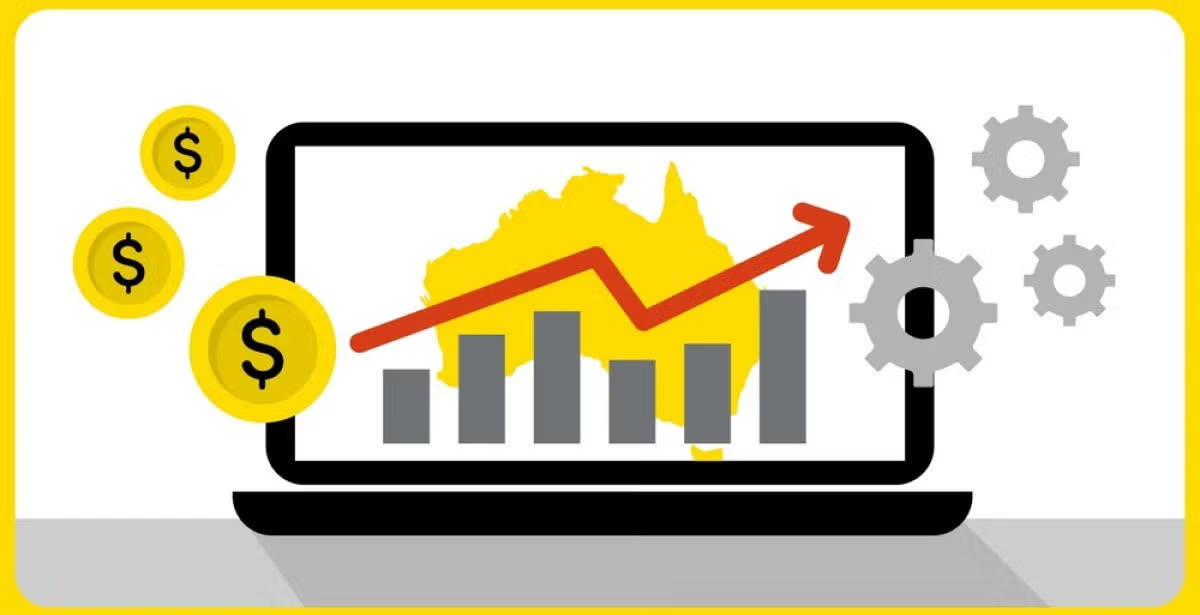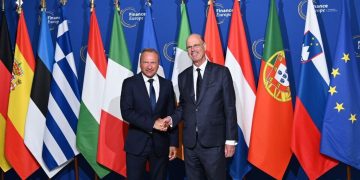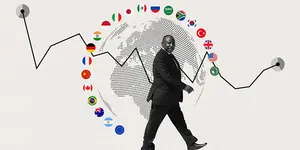Introduction
In 2025, financial markets face a puzzling phenomenon: despite the European Central Bank’s (ECB) aggressive monetary easing, the euro has demonstrated unexpected resilience against the U.S. dollar and other major currencies. Traditional economic theory suggests that lower interest rates should weaken a currency by reducing the returns on euro-denominated assets, yet market behavior has diverged from this expectation.
This paradox challenges investors, policymakers, and economists alike. Understanding the underlying factors behind euro strength requires an examination of global capital flows, relative growth differentials, geopolitical developments, and market psychology. Beyond academic curiosity, the euro’s paradoxical performance carries real implications for European trade competitiveness, corporate earnings, inflation dynamics, and financial stability.
This article explores the drivers of the euro’s unusual performance, its impact on financial and corporate markets, and potential policy responses in the context of ongoing monetary easing.
I. ECB Monetary Easing in 2025
- Rate Cuts and Policy Motivation
- The ECB has cut the main refinancing rate multiple times in 2025, reaching historically low levels.
- Deposit facility rates have become more negative to incentivize lending and stimulate economic activity.
- The rationale is growth support rather than inflation containment, as core inflation remains below target in much of the Eurozone.
- Balance-Sheet Management
- Despite easing, ECB continues to manage its balance sheet cautiously, reducing pandemic-era holdings gradually.
- Selective liquidity injections target weak sovereign bonds and liquidity-sensitive markets.
- Forward guidance emphasizes data dependency, signaling policy flexibility.
- Market Expectations
- Markets anticipated a traditional weakening of the euro, prompting positioning in forward contracts, options, and carry trades.
- However, actual currency movements defied these expectations, reflecting complex global dynamics.
II. Factors Behind the Euro’s Resilience
- Relative U.S. Economic Conditions
- U.S. data in 2025 show signs of moderation: slower GDP growth, cooling labor markets, and gradual easing of inflation.
- Investors begin to price in eventual Fed rate cuts or slower tightening, reducing demand for the U.S. dollar.
- Relative yields between U.S. and European assets narrow temporarily, supporting the euro.
- Trade Surplus Dynamics
- The Eurozone maintains a significant trade surplus, particularly in high-value exports such as machinery, luxury goods, and pharmaceuticals.
- Persistent demand for euros to settle trade transactions supports currency strength despite low domestic interest rates.
- Safe-Haven Flows
- Global geopolitical and financial uncertainty drives investors to diversify holdings into euro-denominated assets.
- European government bonds, particularly German Bunds, benefit from inflows as risk-off instruments, strengthening the euro.
- Market Psychology and Speculation
- Market participants anticipate potential policy missteps in the U.S., creating speculative buying of euros.
- Options markets and carry trade unwinds amplify upward pressure on the currency.
- Capital Flow Rebalancing
- European banks and funds repatriate capital, maintaining liquidity in euro markets.
- Investment into domestic European assets offsets the expected outflow from lower yields.
III. Implications for European Trade and Competitiveness
- Export Dynamics
- A stronger euro increases the cost of European goods abroad, potentially reducing competitiveness in price-sensitive sectors:
- Automotive exports to the U.S.
- Consumer goods and luxury products in emerging markets
- Export-oriented companies face margin compression and may shift pricing strategies or production locations.
- Import Costs and Inflation
- Strong euro reduces import costs for energy, raw materials, and intermediate goods.
- While this eases cost pressures for European manufacturers, it can suppress inflation below ECB targets, complicating monetary policy.
- Corporate Earnings
- Multinational corporations report lower euro-denominated revenues from international markets.
- Profitability is particularly affected in sectors with high U.S. exposure or large foreign currency sales.
- Hedging strategies may mitigate some risks but cannot fully offset currency movements.
IV. Financial Market Impacts

- Equities
- Export-driven sectors may underperform due to currency-induced margin pressure.
- Domestic-oriented sectors and defensive industries see relative strength.
- Equity volatility increases as investors adjust positions in response to currency swings.
- Bonds
- European sovereign bonds attract inflows despite low yields due to safe-haven demand.
- Corporate bond spreads are influenced by perceived exposure to currency risk.
- ECB’s continued liquidity support stabilizes markets but cannot fully offset euro strength.
- Derivatives and Hedging
- Increased demand for forward contracts and options to hedge FX exposure.
- Higher activity in FX swaps and interest-rate derivatives to manage combined currency and rate risks.
- Hedging costs rise, affecting corporate financing and investment decisions.
V. Policy Considerations for ECB and European Governments
- Monetary Policy Dilemma
- ECB aims to stimulate growth through low rates, but euro strength undermines export-driven recovery.
- Maintaining credibility while avoiding excessive currency volatility requires careful communication.
- Potential options include targeted interventions, enhanced forward guidance, or selective liquidity injections.
- Coordination with Fiscal Policy
- Structural investment and targeted fiscal support can complement monetary easing.
- EU-wide programs for innovation, green energy, and infrastructure may offset currency-induced export challenges.
- National governments must balance competitiveness with fiscal prudence.
- Currency Intervention
- Direct intervention remains a last-resort tool due to treaty limitations and market perceptions.
- Indirect influence through signaling and coordinated policy may moderate extreme currency movements.
VI. Scenario Analysis
Scenario 1: Euro Continues to Strengthen - Export-oriented growth remains constrained
- Inflation falls below target
- ECB may maintain easing but face growing criticism from exporters and markets
Scenario 2: Euro Stabilizes - Trade balance adjustments and market corrections reduce pressure
- Monetary easing achieves moderate growth support
- Policy credibility is maintained
Scenario 3: Euro Weakens Unexpectedly - Global shocks or U.S. dollar volatility trigger euro depreciation
- Export competitiveness improves
- Import costs rise, affecting inflation and consumption
VII. Lessons for Investors and Corporates
- Currency Risk Management
- Active hedging strategies are essential
- Diversification of export markets reduces dependency on U.S. and other major currencies
- FX volatility must be incorporated into financial planning
- Investment Strategy
- Favor domestic-oriented sectors or non-export-intensive industries
- Monitor ECB communications closely for policy signals
- Consider currency-sensitive derivatives and structured products
- Long-Term Strategic Planning
- Corporate investment may need relocation or production diversification
- Financial planning must account for potential long-term shifts in global trade and currency regimes
Conclusion
The paradox of euro strength during aggressive ECB monetary easing reflects the complex interplay of trade flows, capital markets, geopolitical dynamics, and investor behavior. While low rates are intended to stimulate growth, external factors—including relative U.S. monetary conditions, trade surpluses, and safe-haven demand—have propelled the euro upward, complicating the policy landscape.
European policymakers must navigate a delicate balance: promoting growth, maintaining price stability, and safeguarding financial markets, all while facing the challenges of a currency that does not move in line with traditional expectations. For investors and corporations, the key lesson is adaptability: hedging, diversification, and strategic planning are essential tools in a market where conventional monetary theory meets the realities of global financial interconnection.
As 2025 progresses, the euro’s paradox will continue to shape European economic prospects, corporate profitability, and investor strategy, highlighting the importance of integrated monetary, fiscal, and market analysis in an increasingly complex global financial system.














